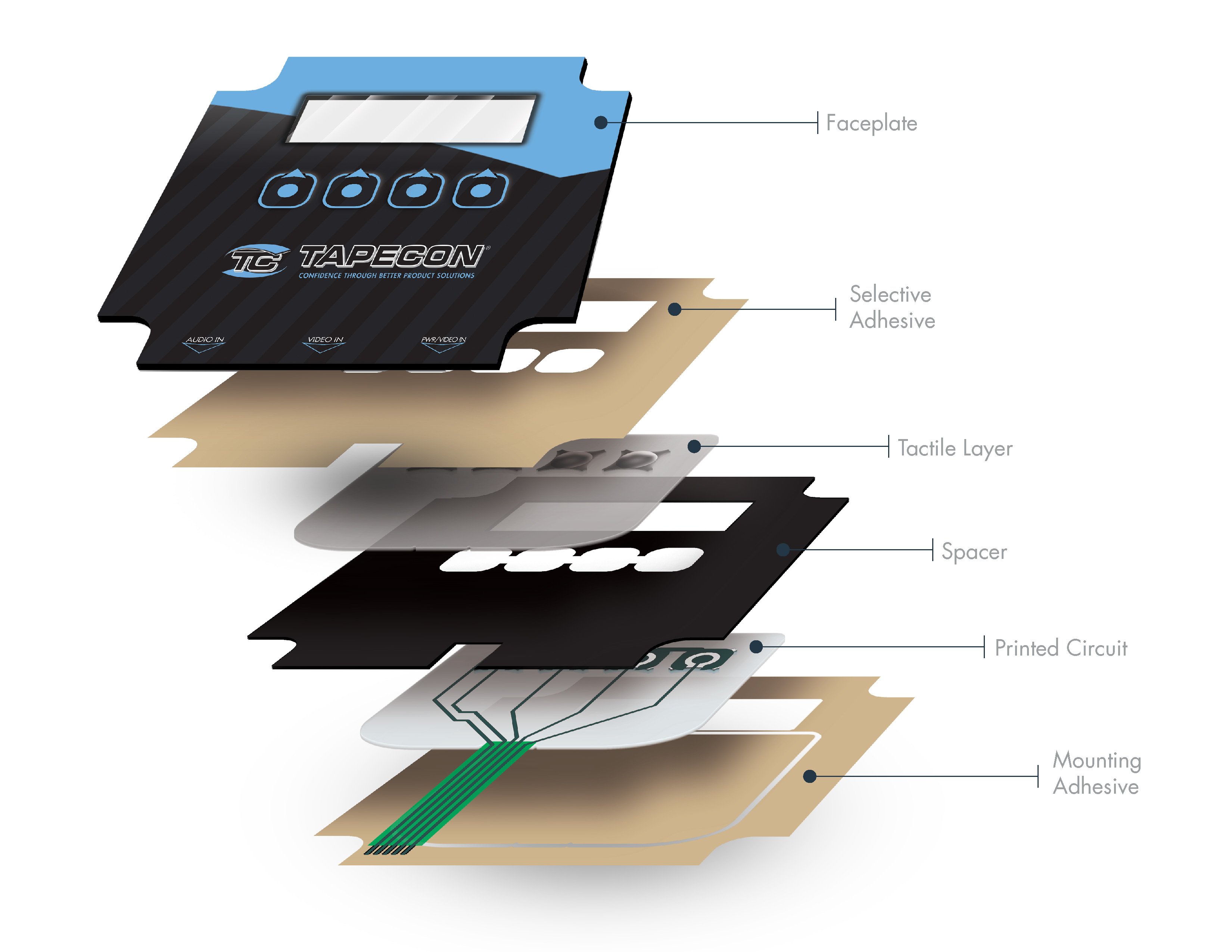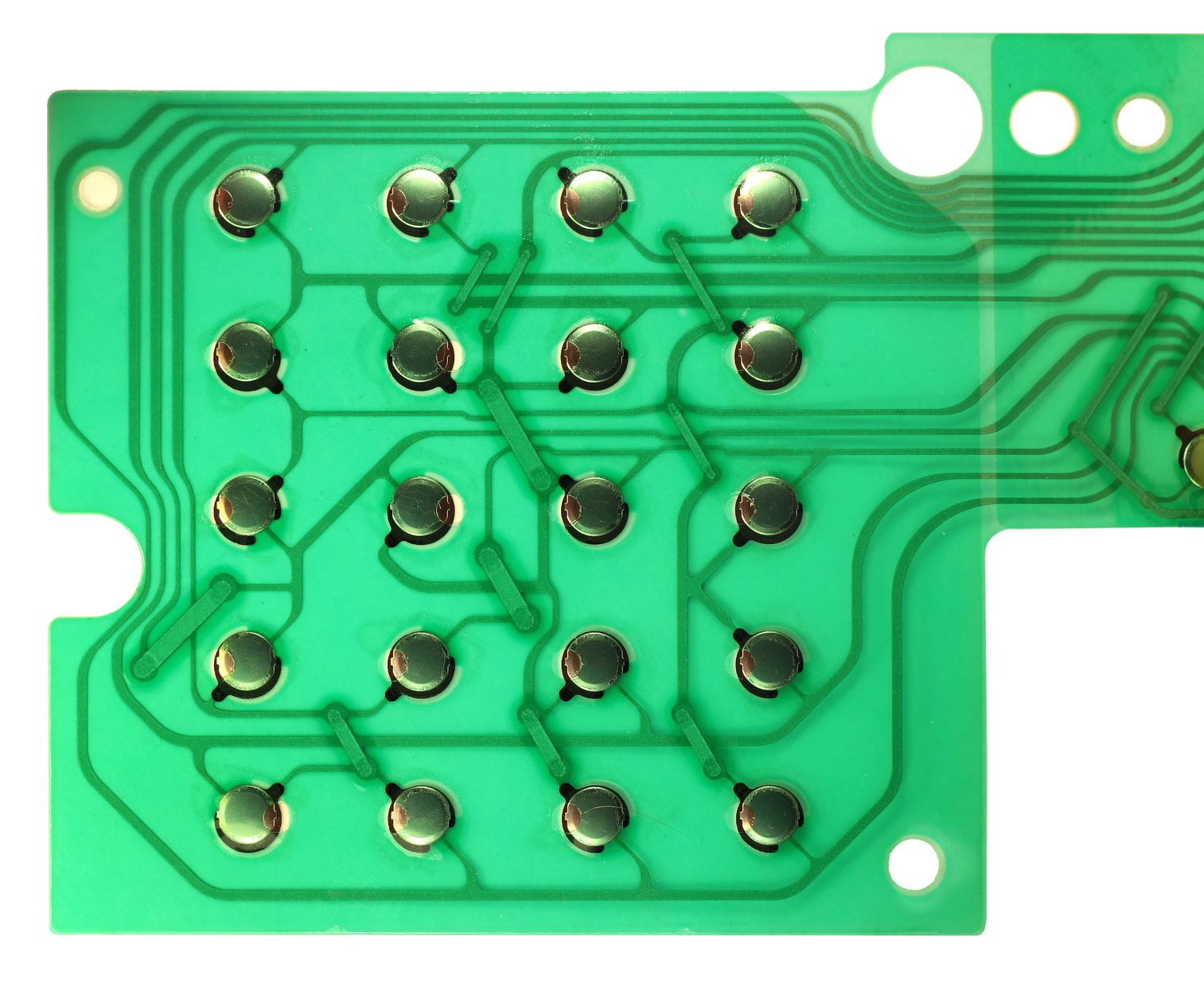How a Membrane Switch Boosts Individual Experience and Device Performance
How a Membrane Switch Boosts Individual Experience and Device Performance
Blog Article
Just How Membrane Layer Switches Over Add To the Durability of Electronic Control Panels
Membrane layer switches play an essential function in improving the longevity of digital control panels, mainly through their multi-layered building and construction which offers effective protection against environmental aspects such as moisture and dust. This design not just lessens the threat of circuit damage and corrosion but also advertises ease of upkeep as a result of its seamless surface. Moreover, the absence of relocating parts considerably lowers the likelihood of mechanical failings, making membrane layer switches over suitable for demanding applications. The implications of these attributes prolong beyond mere defense, increasing inquiries concerning their broader effect on performance and customer experience.
Meaning of Membrane Switches

Membrane layer buttons are created to be thin and light-weight, making them ideal for applications where room is limited. They can be manufactured in numerous shapes, dimensions, and shades, providing flexibility in design that satisfies aesthetic and functional needs. In addition, membrane switches can integrate different technologies, such as tactile feedback and LED indicators, boosting customer experience.
Due to their building, membrane buttons are typically resistant to dirt, dampness, and general wear, adding to their resilience sought after environments. Their seamless layout not just facilitates simple cleaning but also lessens the threat of mechanical failing, making them a recommended choice for suppliers seeking trustworthy customer interfaces in their digital control board.
Security Versus Ecological Variables
The style of membrane layer switches naturally offers a level of protection against different environmental factors, which is important for keeping capability in challenging problems - Membrane Switch. These switches are generally created with layers of versatile products that shield interior elements from wetness, dirt, and contaminants. By enveloping the circuitry, membrane layer switches reduce the danger of brief circuits and rust, which can significantly harm efficiency
Furthermore, using robust adhesives and sealants during manufacturing enhances their resistance to ecological obstacles. Membrane layer buttons can sustain exposure to chemicals and solvents, making them appropriate for sectors such as food handling and healthcare, where hygiene and tidiness are critical. Their smooth surface area layout additionally prevents the accumulation of dirt and microorganisms, facilitating much easier cleansing and maintenance.
Temperature fluctuations are one more ecological worry, and membrane layer switches are engineered to work efficiently throughout a wide variety of temperature levels (Membrane Switch). This adaptability guarantees that control board continue to be functional in numerous setups, from industrial environments to consumer electronics
Influence on Customer Communication
Customer communication with electronic control panels is significantly affected by the layout and capability of membrane layer buttons. These buttons provide a tactile user interface that enhances the total user experience, enabling instinctive navigation and control. Their responsive nature guarantees that individuals get prompt feedback upon activation, which is important for tasks calling for precision and effectiveness.
Furthermore, the smooth surface of membrane switches over facilitates easy cleaning and maintenance, promoting customer confidence in the reliability of the user interface. This sanitation is especially vital in settings where hygiene is critical, such as medical or food handling setups. Additionally, the small and lightweight design of membrane switches adds to the visual appeal of control panels, urging individual interaction via a modern and sleek appearance.
Furthermore, the assimilation of aesthetic elements, such as printed symbols and backlighting, assists customers quickly recognize functions, decreasing the learning curve connected with new equipment. Because of this, users can run gadgets better, leading to raised performance and fulfillment. In summary, membrane buttons play a pivotal role in boosting user interaction you can try here by integrating functionality, aesthetic appeals, and ease of use, inevitably resulting in improved operational performance.
Layout Versatility and Customization
Design adaptability and personalization are necessary aspects of membrane layer switches, enabling producers to customize digital control panels to particular applications and individual needs. This versatility permits the assimilation of various design aspects, such as colors, graphics, and appearances, which can improve the visual appeal and customer involvement of the control board.
Membrane switches can be personalized in size and form, suiting a vast range of tools and applications, from commercial equipment to customer electronic devices. This versatility guarantees that suppliers can develop intuitive interfaces that line up with user expectations and operational demands. Additionally, the capability to incorporate special attributes such as backlighting or tactile responses even more enhances use, permitting an extra interactive experience.
Furthermore, the weblink production procedure for membrane changes sustains the rapid prototyping of layouts, enabling makers to iterate and fine-tune their ideas promptly. This ability not only accelerates the advancement timeline however also ensures that the end product fulfills details practical and aesthetic standards.

Cost-Effectiveness and Long Life
Cost-effectiveness and durability are substantial advantages of membrane switches, making them an appealing option for manufacturers and end-users alike. These switches are generally cheaper to create than conventional mechanical switches, largely due to their streamlined production procedures and the minimized number of components needed. This expense advantage prolongs not only to preliminary production yet additionally to long-term operational expenses, as membrane buttons commonly require less maintenance and have a reduced failing rate.
Moreover, the durability of membrane layer switches over adds to their overall worth. Created from resilient materials, they are resistant to ecological factors such as wetness, dirt, and chemicals, which can bring about early wear in various other switch kinds. The absence of moving parts useful content reduces mechanical failure, permitting membrane layer switches to preserve functionality over expanded durations.
This resilience is specifically valuable in applications needing regular efficiency under demanding conditions, such as medical tools and industrial devices. Eventually, the combination of cost-effectiveness and durability makes membrane switches over a financially viable option for suppliers, providing reputable remedies that hold up against the examination of time while optimizing monetary considerations.
Final Thought
In conclusion, membrane layer switches significantly boost the resilience of digital control panels through their durable building and safety functions - Membrane Switch. Overall, membrane changes stand for a trusted and cost-efficient option for boosting the durability and performance of digital control systems.
Report this page